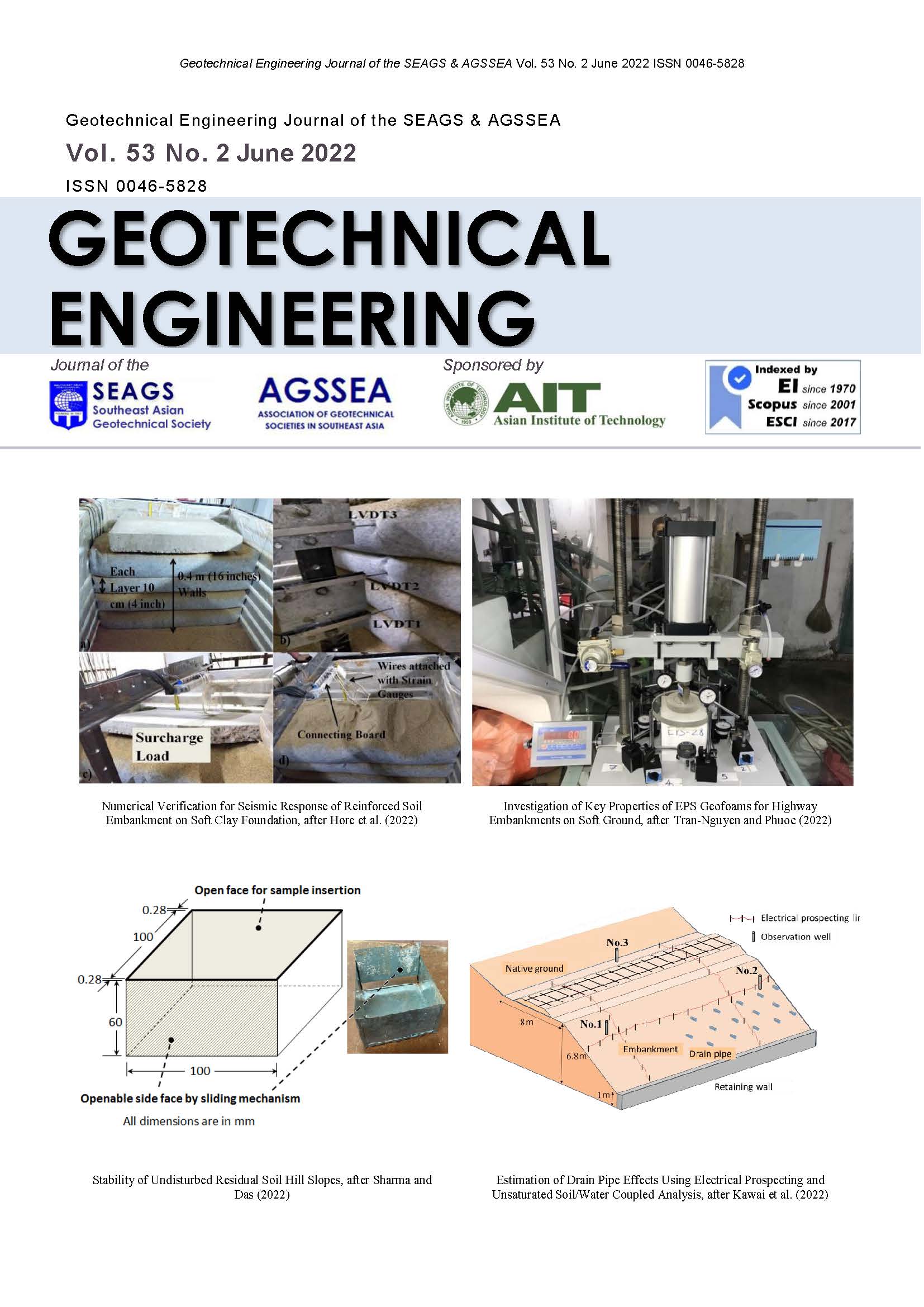Behaviour of Foundation Rested on Finite Saturated Salt-Encrusted Flat Soil (Sabkha) Improved by Cement Addition under Repeated Loading
Main Article Content
Abstract
The dynamic response of a block machine foundation rested on the finite thickness of cemented sabkha was investigated by carrying out a 1g small scale test. The parameters that were considered in the account in the study were cement content, ratio of thickness of the cemented sabkha to the foundation’s diameter, magnitude and rate of pulse load. The results revealed that the cement content has a significant effect more than the thickness of cement-sabkha. The reduction in the maximum settlement value by increasing cement content decreases with the increased thickness of cement-sabkha. The rate of pulse loading leads to an increase in the maximum settlement of at least 100 and 60% for thickness ratios of 0.2 and 0.4, respectively, and these effects decrease with the increasing thickness of cement sabkha. The influence of the value pulse loading and the rate of the pulse loading on the raising of the sabkha's stresses increases with increasing thickness ratio more than cement content. In terms of the liquefaction risk of the sabkha soil that underlies the cement-sabkha layer, there is no liquefaction in sabkha soil when the value and rate of pulse loading that is applied to the foundation are less than 240 N and 200 blows/min. The maximum pore pressure ratio (ru) value ranges from 0.07 to 0.1.
Article Details

This work is licensed under a Creative Commons Attribution-NonCommercial-NoDerivatives 4.0 International License.
Copyright © 2019 Association of Geotechnical Societies in Southeast Asia (AGSSEA) - Southeast Asian Geotechnical Society (SEAGS).


